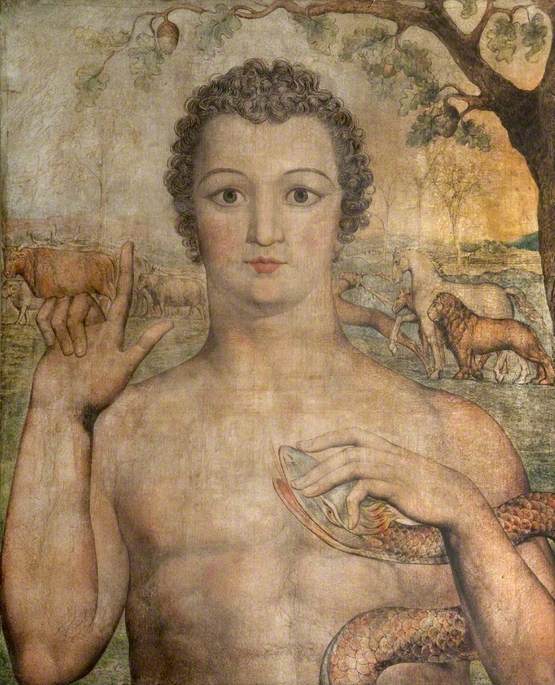First posted June 2014
_-_Adam_Naming_the_Beasts_-_PC.95_-_Pollok_House.jpg) |
Pollock House Adam Naming the Beasts |
Genesis 2
[18]Then the LORD God said, "It is not good that the man should be alone; I will make him a helper fit for him."
[19] So out of the ground the LORD God formed every beast of the field and every bird of the air, and brought them to the man to see what he would call them; and whatever the man called every living creature, that was its name.
[20] The man gave names to all cattle, and to the birds of the air, and to every beast of the field; but for the man there was not found a helper fit for him.
Peter Ackroyd, on page 300 of Blake: A Biography, says of this picture:
"We can arise and meet the gaze of the primordial Adam, then, and see in that blessed moment the very origin and meaning of the Divine Vision by which all things are known and named. Boehme's words are appropriate here, in his descriptions of the luminous primordial man 'who knew the language of God and the angels ...And Adam knew that he was within every creature, and he gave to each its appropriate name.'"
Vision of Last Judgment, (E 560)
"If the Spectator could Enter into these Images in his
Imagination approaching them on the Fiery Chariot of his
Contemplative Thought if he could Enter into Noahs Rainbow or
into his bosom or could make a Friend & Companion of one of these
Images of wonder which always intreats him to leave mortal things
as he must know then would he arise from his Grave then would he
meet the Lord in the Air & then he would be happy General
Knowledge is Remote Knowledge it is in Particulars that Wisdom
consists & Happiness too. Both in Art & in Life General Masses
are as Much Art as a Pasteboard Man is Human Every Man has Eyes
Nose & Mouth this Every Idiot knows but he who enters into &
discriminates most minutely the Manners & Intentions the
[Expression] Characters in all their branches is the
alone Wise or Sensible Man & on this discrimination All Art is
founded. I intreat then that the Spectator will attend to the
Hands & Feet to the Lineaments of the Countenances they are all
descriptive of Character & not a line is drawn without intention
& that most discriminate & particular as Poetry admits not a
Letter that is Insignificant so Painting admits not a Grain of
Sand or a Blade of Grass Insignificant much less an
Insignificant Blur or Mark" 










